Dimensionless Energy Conversion Characteristics of an Air-Powered Hydraulic Vehicle
Abstract
:1. Introduction
2. Structure of the Power System of the Air-Powered Vehicle
3. Mathematical Modeling and Experimental Verification
3.1. Pneumatic System Energy Equations
- Cv: specific thermal capacity at constant volume, 718 J/(kg·K);
- m: air mass;
- T: temperature in pneumatic chamber;
- t: time;
- S: effective air heat exchange area in pneumatic chamber;
- q: air mass flow in pneumatic chamber;
- R: gas constant, 287 J/(kg·K);
- Ta: ambient temperature;
- p: pneumatic pressure;
- A: pneumatic piston area;
- u: piston velocity;
- hc: heat exchange coefficient in the charge side;
- hd: heat exchange coefficient in the discharge side.
3.2. Continuity Equations of Pneumatic System
- Aep: effective pneumatic area in intake and exhaust ports;
- pu: pressure in upstream side;
- pd: pressure in downstream side;
- κ: specific thermal ratio;
- Tu: upstream side temperature.
3.3. State Equation of Pneumatic System
3.4. Motion Equations
- x: piston displacement;
- M: piston mass;
- Ff: friction force;
- Fs: maximum static friction force;
- Fc: Coulomb friction force;
- C: viscosity friction coefficient;
- pdA: pressure of driving chamber A;
- pdB: pressure of driving chamber B;
- Adl: left piston area of driving chamber A;
- Adr: right piston area of driving chamber B;
- pbA1: pressure of the first pumping chamber A;
- pbB1: pressure of the first pumping chamber B;
- Abl1: left piston area of the first pumping chamber A;
- Abr1: right piston area of the first pumping chamber B;
- pbA2: pressure of the second pumping chamber A;
- pbB2: pressure of the second pumping chamber B;
- Abl2: left piston area of the second pumping chamber A;
- Abr2: right piston area of the second pumping chamber B;
- L: motion stroke.
3.5. Pressure Equations of Hydraulic System
- β: effective bulk modulus;
- Vlh: hydraulic volume in left chamber;
- Qlhin: input hydraulic volume flow in left chamber;
- Qlhout: output hydraulic volume flow in left chamber;
- Ah: hydraulic chamber area;
- Vrh: hydraulic volume in right chamber;
- Qrhin: input hydraulic volume flow in right chamber;
- Qrhout: output hydraulic volume flow in right chamber;
- plp: pneumatic pressure in left chamber;
- prp: pneumatic pressure in right chamber;
- plh: hydraulic pressure in left chamber;
- prh: hydraulic pressure in right chamber.
3.6. Flow Equation of Hydraulic System
- Cd: pore throttling coefficient;
- Aeh: effective throttle area;
- ρh: flow density.
3.7. Power of Pneumatic System
- pa: ambient air pressure.
- θa: ambient air temperature.
3.8. Power of Hydraulic System
4. Dimensionless Modelling of HP Transformer
4.1. Reference Values
4.2. Dimensionless Energy Equations of Pneumatic System
4.3. Dimensionless Continuity Equations of Pneumatic System
4.4. Dimensionless State Equation of Pneumatic System
4.5. Motion Equations
- Fs*: dimensionless maximum static friction force;
- Fc*: dimensionless Coulomb friction force;
- C*: dimensional viscous friction force coefficient.
4.6. Dimensionless Pressure Equations of Hydraulic System
4.7. Dimensionless Flow Equations of Hydraulic System
4.8. Power of Pneumatic System
4.9. Power of Hydraulic System
5. Simulation and Experimental Study on a HP Transformer
5.1. Experimental Verification of the Mathematical Model
5.2. Dynamic Power Characteristics of the HP Transformer
6. Study on the Power and Efficiency of the HP Transformer
6.1. Influence of the Output Pressure
- (1)
- When the dimensionless output oil pressure increases with a proper difference from 2.42 to 3.00, the output power decreases from 0.043 to 0.0322 at the same time. This phenomenon can be explained as the rise of the output oil pressure may result in the decrease of the output flow, so the output oil pressure which is calculated by output flow and output oil pressure decreases.
- (2)
- As we can see in Figure 8, the curves of the dimensionless output power, system efficiency and dimensionless output oil pressure are similar to the trend line.
6.2. Influence of the Aperture of the Orifice of the Hydraulic Chamber
- (1)
- When the dimensionless aperture increases with a proper difference from 0.0256 to 0.030, the output power increase from 0.015 to 0.05 and the efficiency increase from 33.56% to 34.7% properly. This phenomenon can be explained as follows: when the aperture of the orifice of the hydraulic increase, the output flow is sure increase, so the output power increase while the output pressure keep constant
- (2)
- As we can see in Figure 10, the curves of the dimensionless output power, system efficiency and dimensionless aperture of the hydraulic chamber orifice are similar to the trendline.
6.3. Influence of the Area Ratio of the Pistons
- (1)
- With the increase of the dimensionless area ratio of the pistons, the output power increases from 0.028 to 0.048 while the efficiency decreases from 34.79% to 33.42%. This is because when the area of the pneumatic piston is constant and the area of the hydraulic piston increase, the output pressure increases correspondingly. So the output power, which is calculated by output pressure and output flow, will increase.
- (2)
7. Conclusions
- (1)
- The experimental curve of the archetype has a good match with the simulation curve of the dimensionless model, so it can be derived that the mathematical model is effective and accurate.
- (2)
- When the dimensionless output pressure increase from 2.42 to 3.00, the dimensionless output power decrease from 0.043 to 0.0322, while the system efficiency increase from 33.54% to 34.8%.
- (3)
- While the dimensionless aperture increases from 0.0256 to 0.030, the dimensionless output power increase from 0.015 to 0.05, the system efficiency increase from 33.56% to 34.7% at the same time.
- (4)
- When the area ratio of the pistons increase from 3.6 to 4.4, the dimensionless output power increase from 0.028 to 0.048, and the system efficiency decrease from 34.79% to 33.42% properly.
Author Contributions
Conflicts of Interest
References
- Yu, Q.; Shi, Y.; Cai, M.; Xu, W. Fuzzy logic speed control for the engine of an air-powered vehicle. Adv. Mech. Eng. 2016, 8. [Google Scholar] [CrossRef]
- Hung, Y.H.; Chen, J.H.; Wu, C.H.; Chen, S.Y. System design and mechatronics of an air supply station for air-powered scooters. Comput. Electr. Eng. 2016, 54, 185–194. [Google Scholar] [CrossRef]
- Wijngaarden, L.V. On the equations of motion for mixtures of liquid and gas bubbles. J. Fluid Mech. 2006, 33, 465–474. [Google Scholar] [CrossRef]
- Zhao, P.; Dai, Y.; Wang, J. Design and thermodynamic analysis of a hybrid energy storage system based on A-CAES (adiabatic compressed air energy storage) and FESS (flywheel energy storage system) for wind power application. Energy 2014, 70, 674–684. [Google Scholar] [CrossRef]
- Naranjo, J.; Kussul, E.; Ascanio, G. A new pneumatic vanes motor. Mechatronics 2010, 20, 424–427. [Google Scholar] [CrossRef]
- Zang, Y.J.; Polytechnic, S. Design and Analysis of a New Type Bidirectional Pneumatic-hydraulic Pressurization System. Hydraul. Pneum. Seals 2013, 9, 57–58. [Google Scholar]
- Shi, Y.; Wu, T.; Cai, M.; Liu, C. Modelling and study on the output flow characteristics of expansion energy used hydropneumatic transformer. J. Mech. Sci. Technol. 2016, 30, 1163–1170. [Google Scholar] [CrossRef]
- Niu, J.L.; Shi, Y.; Cao, Z.X.; Cai, M.L.; Wei, C.; Zhu, J. Study on air flow dynamic characteristic of mechanical ventilation of a lung simulator. China Technol. Sci. 2017, 60, 1–8. [Google Scholar]
- Pimm, A.J.; Garvey, S.D.; Jong, M.D. Design and testing of Energy Bags for underwater compressed air energy storage. Energy 2014, 66, 496–508. [Google Scholar] [CrossRef]
- Cai, M.; Kawashima, K.; Kagawa, T. Power Assessment of Flowing Compressed Air. J. Fluids Eng. 2006, 128, 40–405. [Google Scholar] [CrossRef]
- Li, J.; Li, C.F.; Zhang, Y.X.; Yue, H.G. Compressed air energy storage system exergy analysis and its combined operation with nuclear power plants. Appl. Mech. Mater. 2013, 448, 2786–2789. [Google Scholar] [CrossRef]
- Zheng, X.; Xie, L.; Liu, L. Stability Analysis of Pneumatic Cabin Pressure Regulating System with Complex Nonlinear Characteristics; Hindawi Publishing Corp: Cairo, Egypt, 2015. [Google Scholar]
- Lafmejani, A.S.; Masouleh, M.T.; Kalhor, A. An experimental study on friction identification of a pneumatic actuator and dynamic modeling of a proportional valve. In Proceedings of the IEEE International Conference on Robotics and Mechatronics, Hefei/Tai’an, China, 27–31 August 2017. [Google Scholar]
- Yang, F.; Li, G.; Hua, J.; Li, X.; Kagawa, T. A New Method for Analysing the Pressure Response Delay in a Pneumatic Brake System Caused by the Influence of Transmission Pipes. Appl. Sci. 2017, 7, 941. [Google Scholar] [CrossRef]
- Shi, Y.; Zhang, B.; Cai, M.; Zhang, D. Numerical Simulation of volume-controlled mechanical ventilated respiratory system with two different lungs. Int. J. Numer. Methods Biomed. Eng. 2016, 33, 2852. [Google Scholar] [CrossRef] [PubMed]
- Shi, Y.; Cai, M.L. Dimensionless study on outlet flow characteristics of an air-driven booster. J. Zhejiang Univ. Sci. A 2012, 13, 481–490. [Google Scholar] [CrossRef]
- Vaezi, M.; Izadian, A. Control of a hydraulic wind power transfer system under disturbances. In Proceedings of the IEEE International Conference on Renewable Energy Research and Application, Bandung, Indonesia, 5–7 October 2015; pp. 886–890. [Google Scholar]
- Shi, Y.; Wang, Y.X.; Cai, M.L.; Zhang, B.L.; Zhu, J. An aviation oxygen supply system based on a mechanical ventilation model. Chin. J. Aeronaut. 2018, 31, 197–204. [Google Scholar] [CrossRef]
- Ren, S.; Cai, M.; Shi, Y.; Xu, W.; Zhang, X.D. Influence of Bronchial Diameter Change on the airflow dynamics Based on a Pressure-controlled Ventilation System. Int. J. Numer. Methods Biomed. Eng. 2017. [Google Scholar] [CrossRef] [PubMed]
- Ren, S.; Shi, Y.; Cai, M.; Xu, W. Influence of secretion on airflow dynamics of mechanical ventilated respiratory system. IEEE/ACM Trans. Comput. Biol. Bioinform. 2017. [Google Scholar] [CrossRef] [PubMed]
- Shi, Y.; Zhang, B.; Cai, M.; Xu, W. Coupling Effect of Double Lungs on a VCV Ventilator with Automatic Secretion Clearance Function. IEEE/ACM Trans. Comput. Biol. Bioinform. 2017. [Google Scholar] [CrossRef] [PubMed]
- Shi, Y.; Wu, T.; Cai, M.; Wang, Y.; Xu, W. Energy conversion characteristics of a hydropneumatic transformer in a sustainable-energy vehicle. Appl. Energy 2016, 171, 77–85. [Google Scholar] [CrossRef]
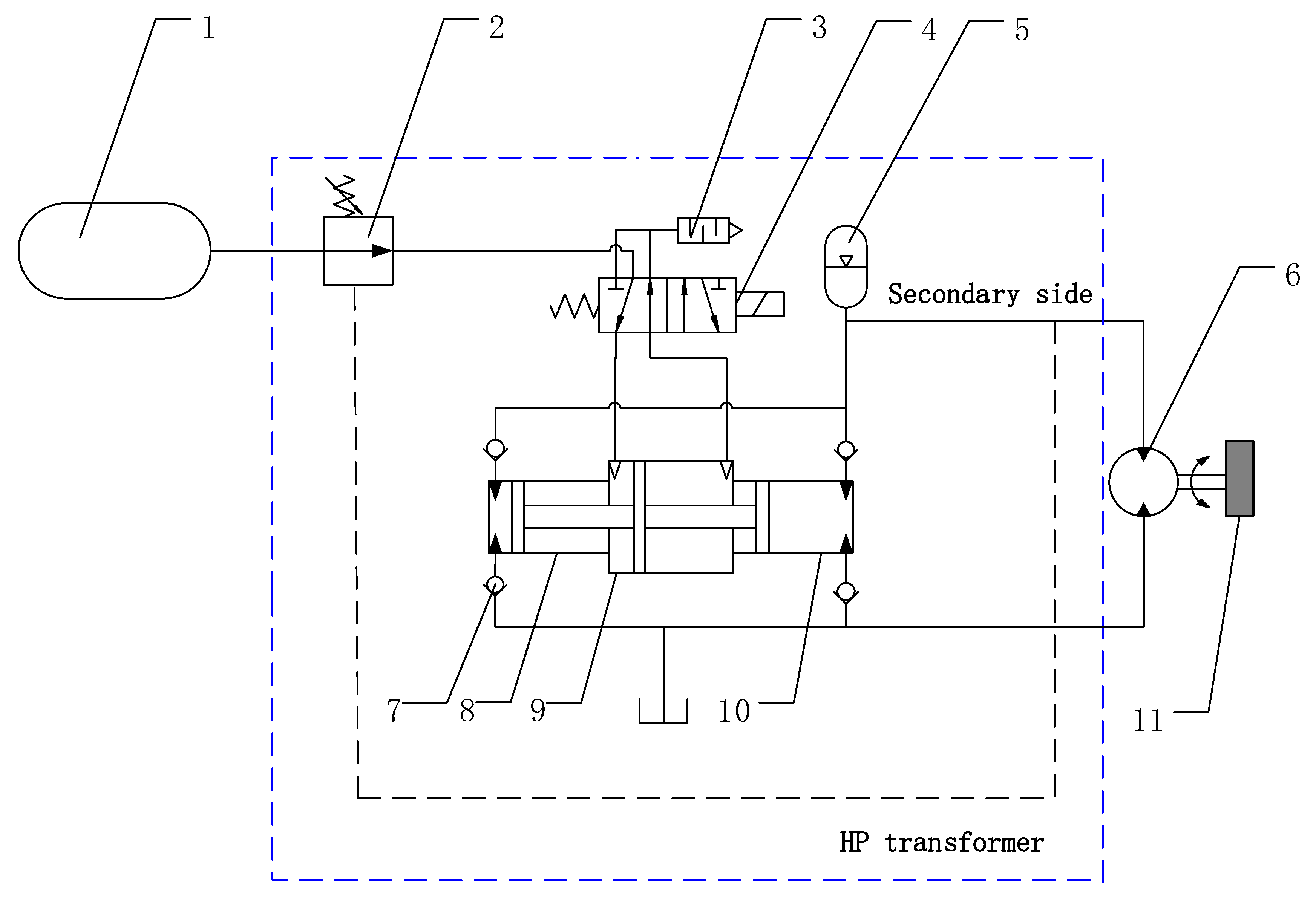
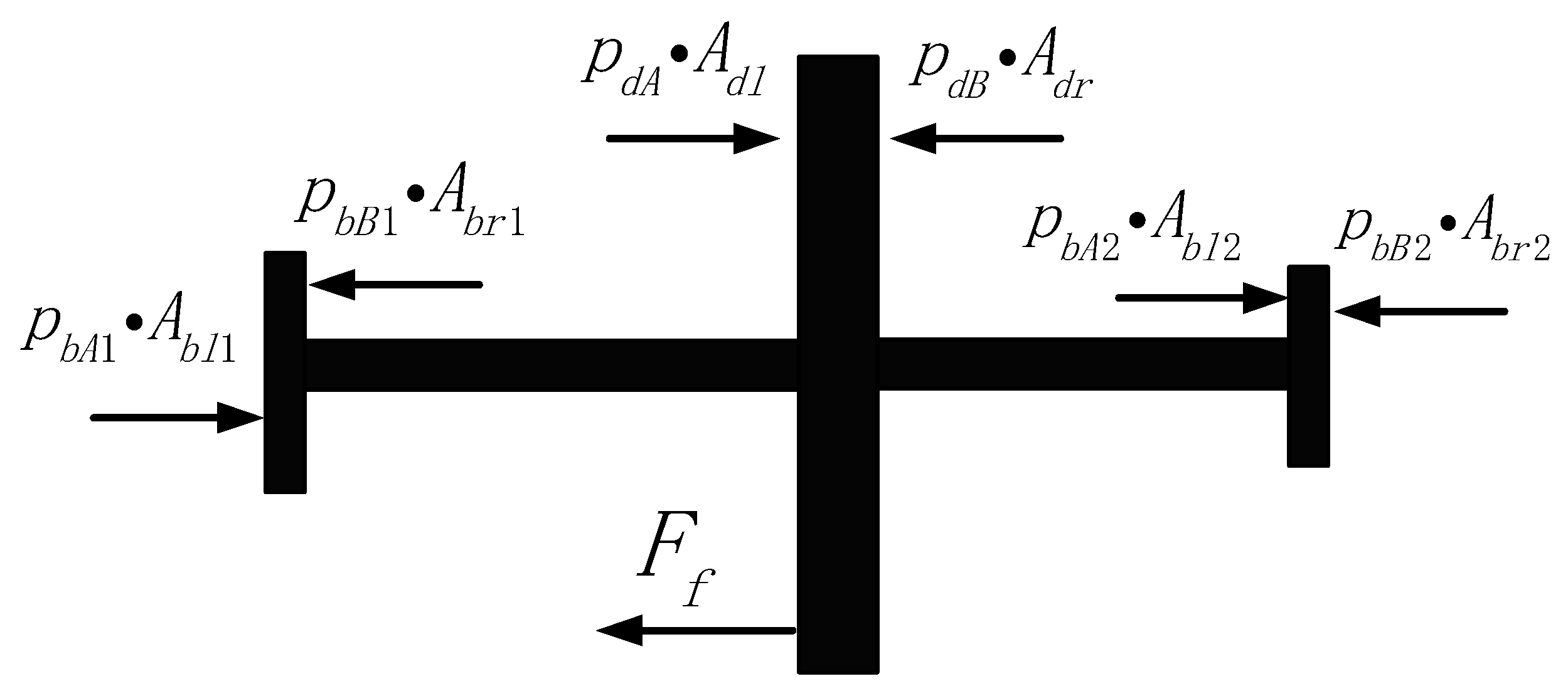

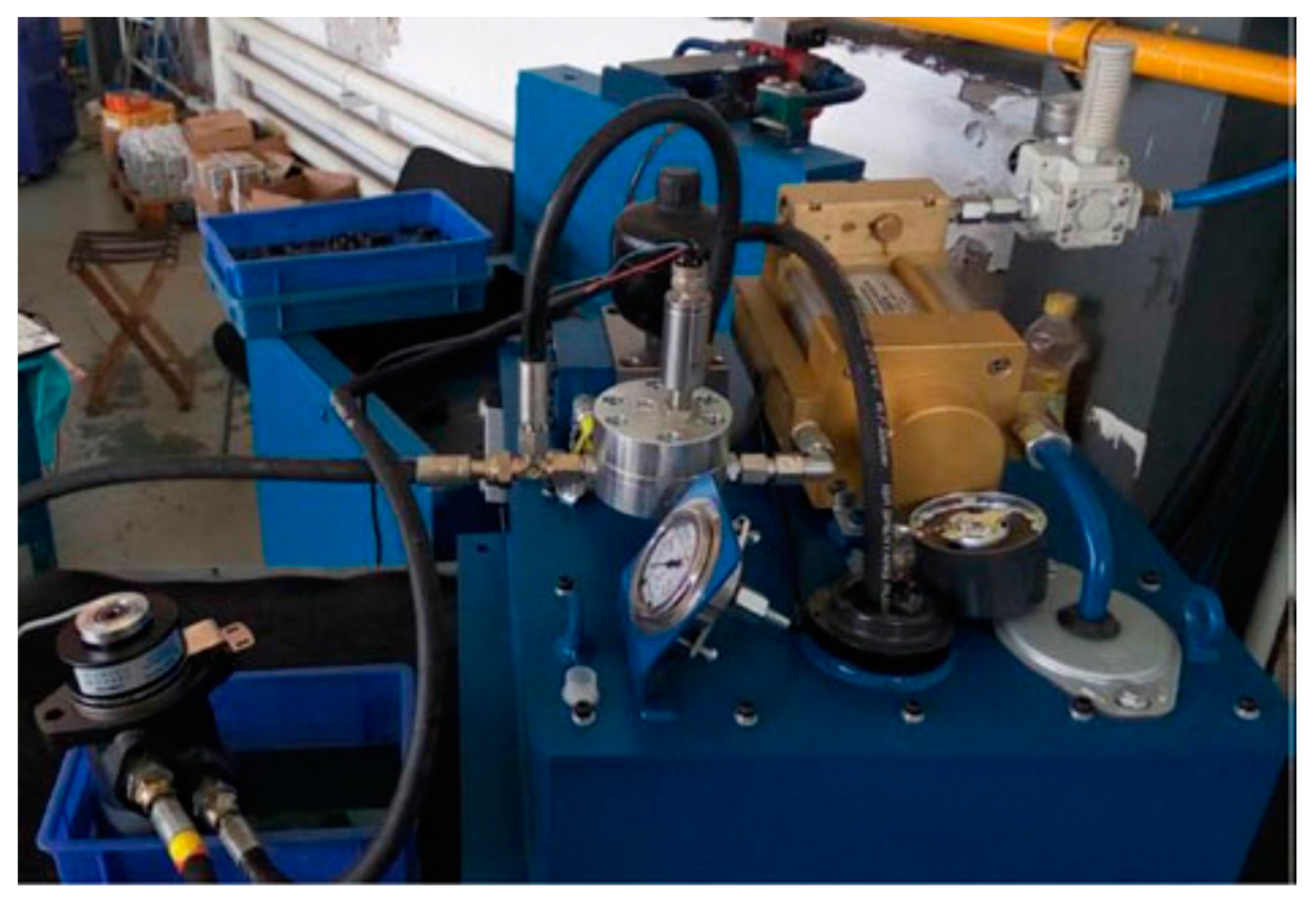

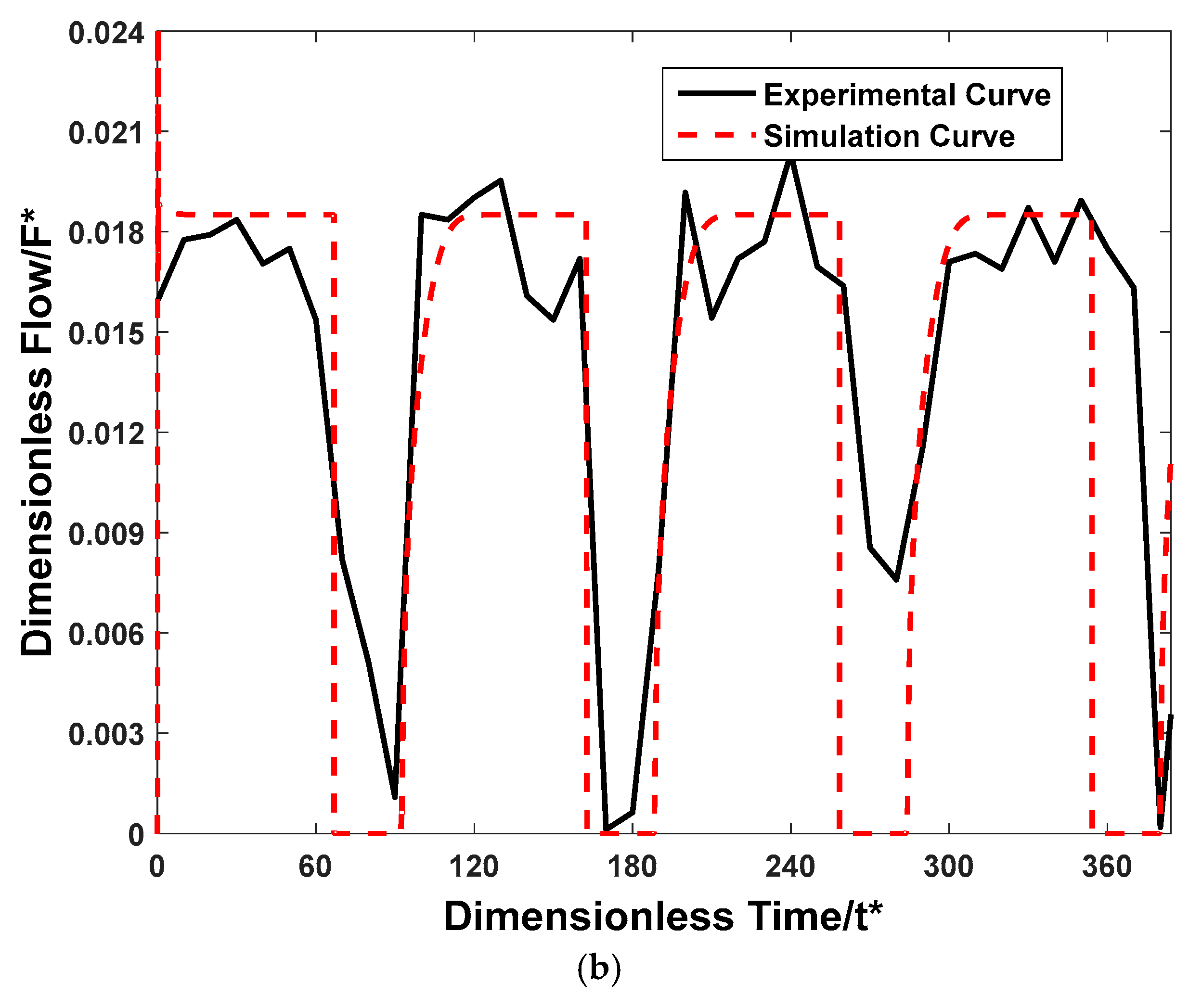
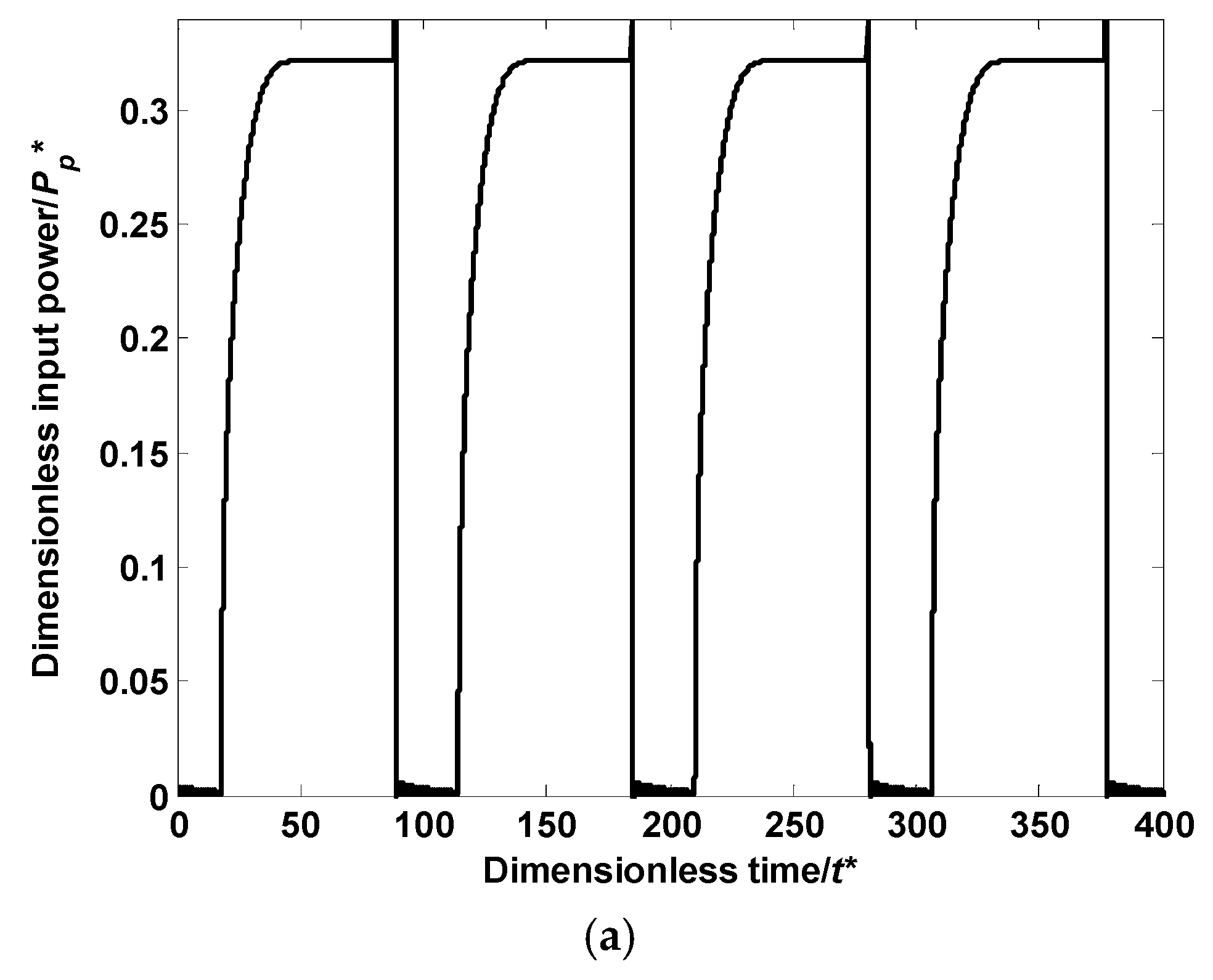
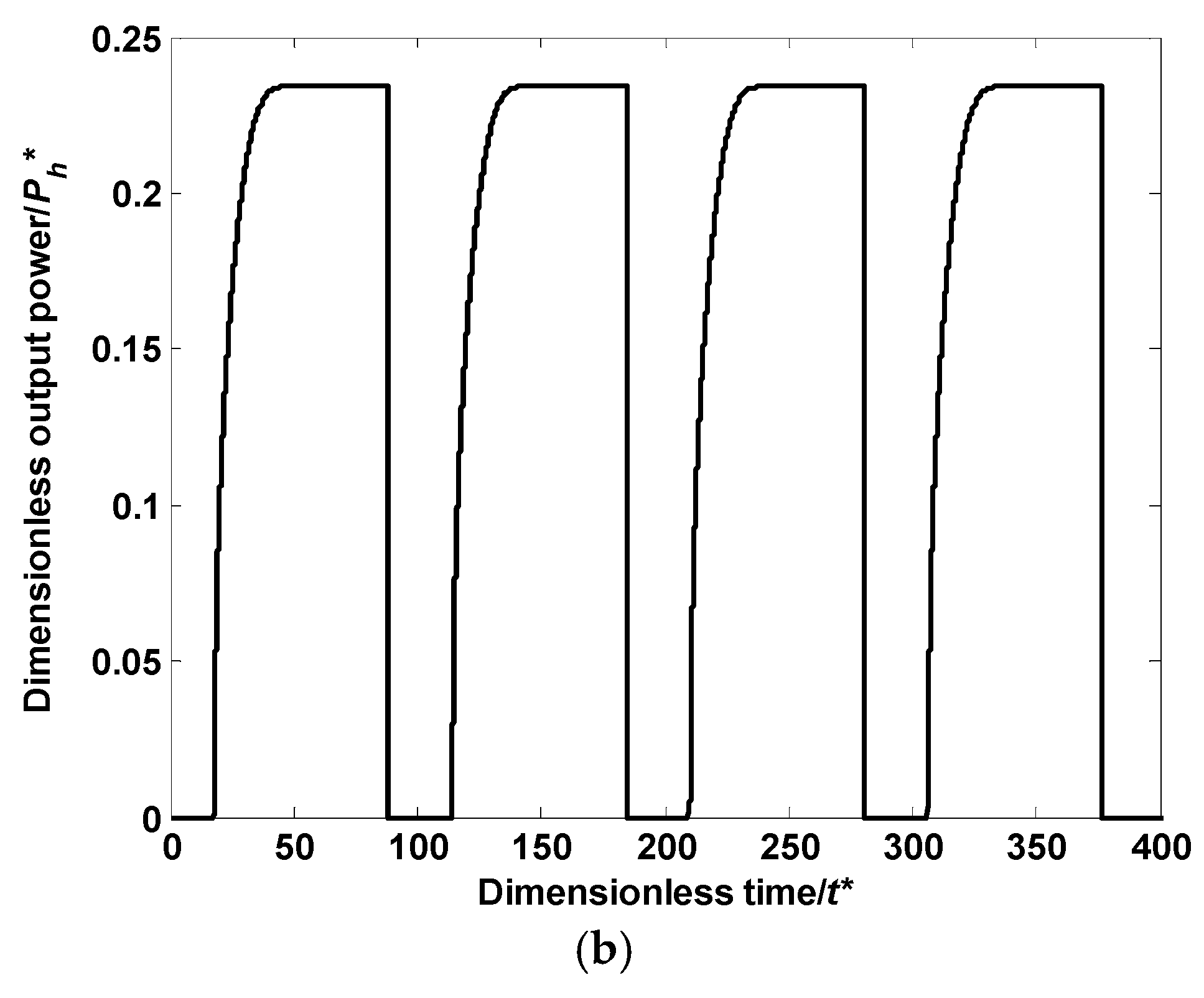

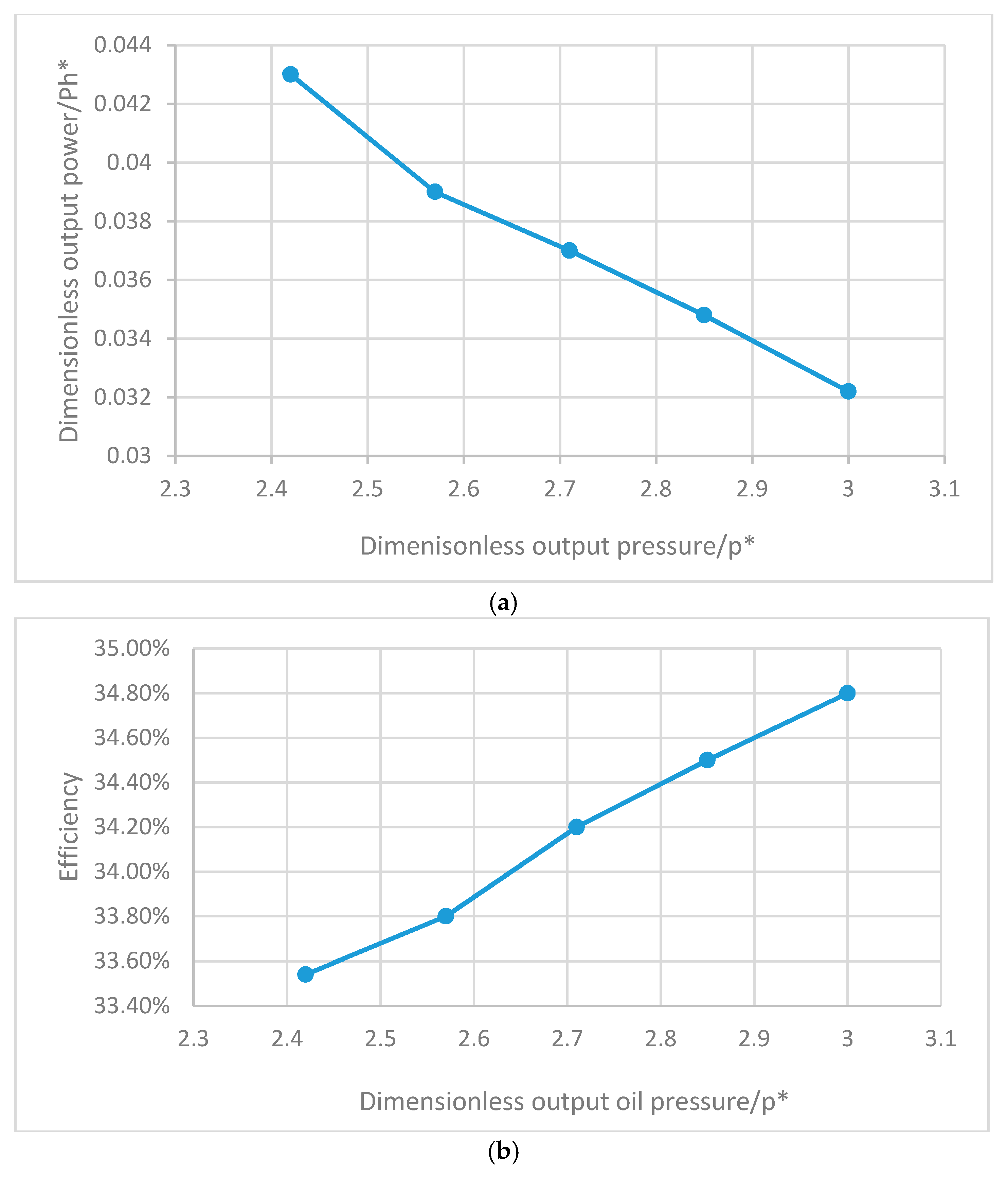
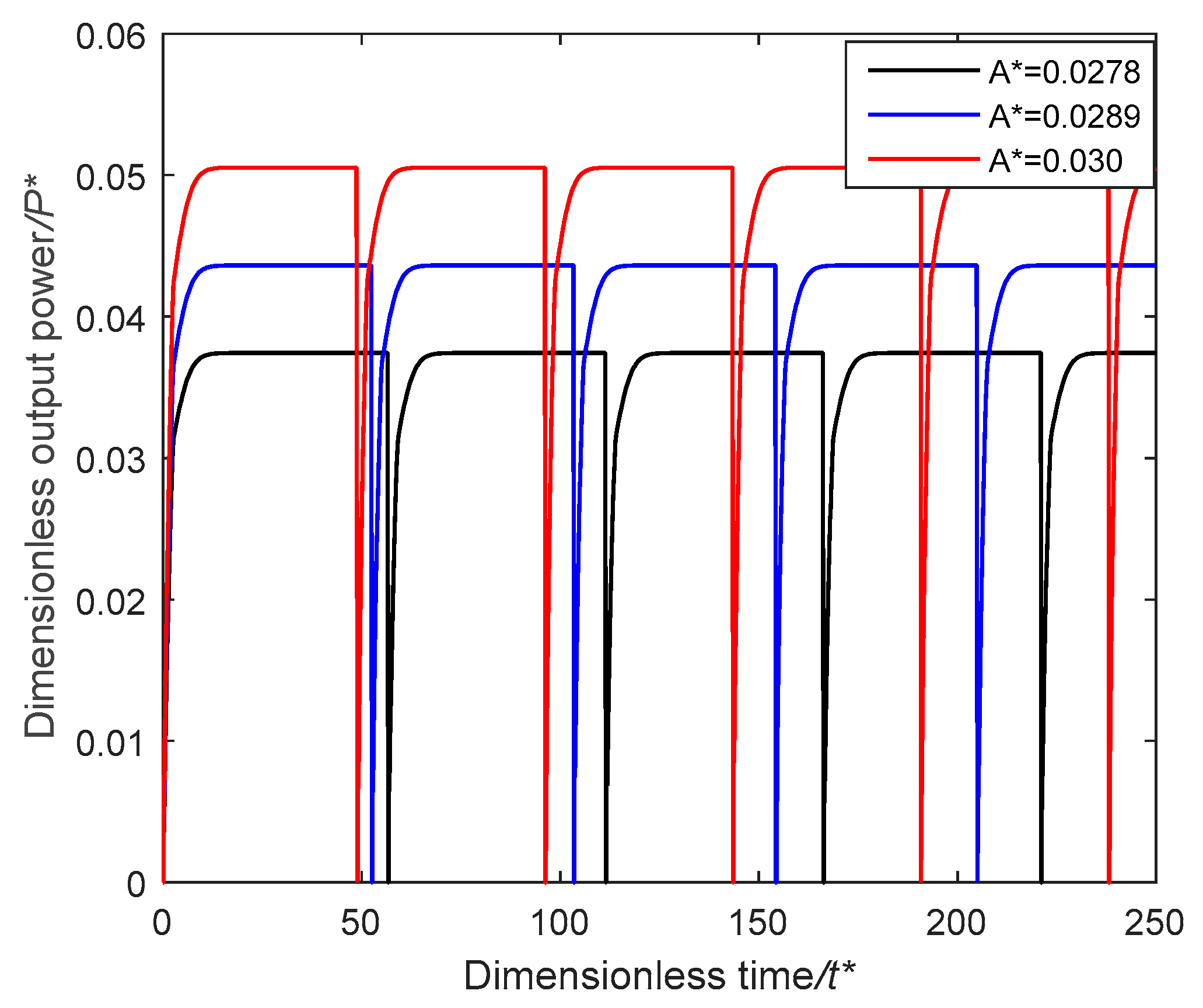
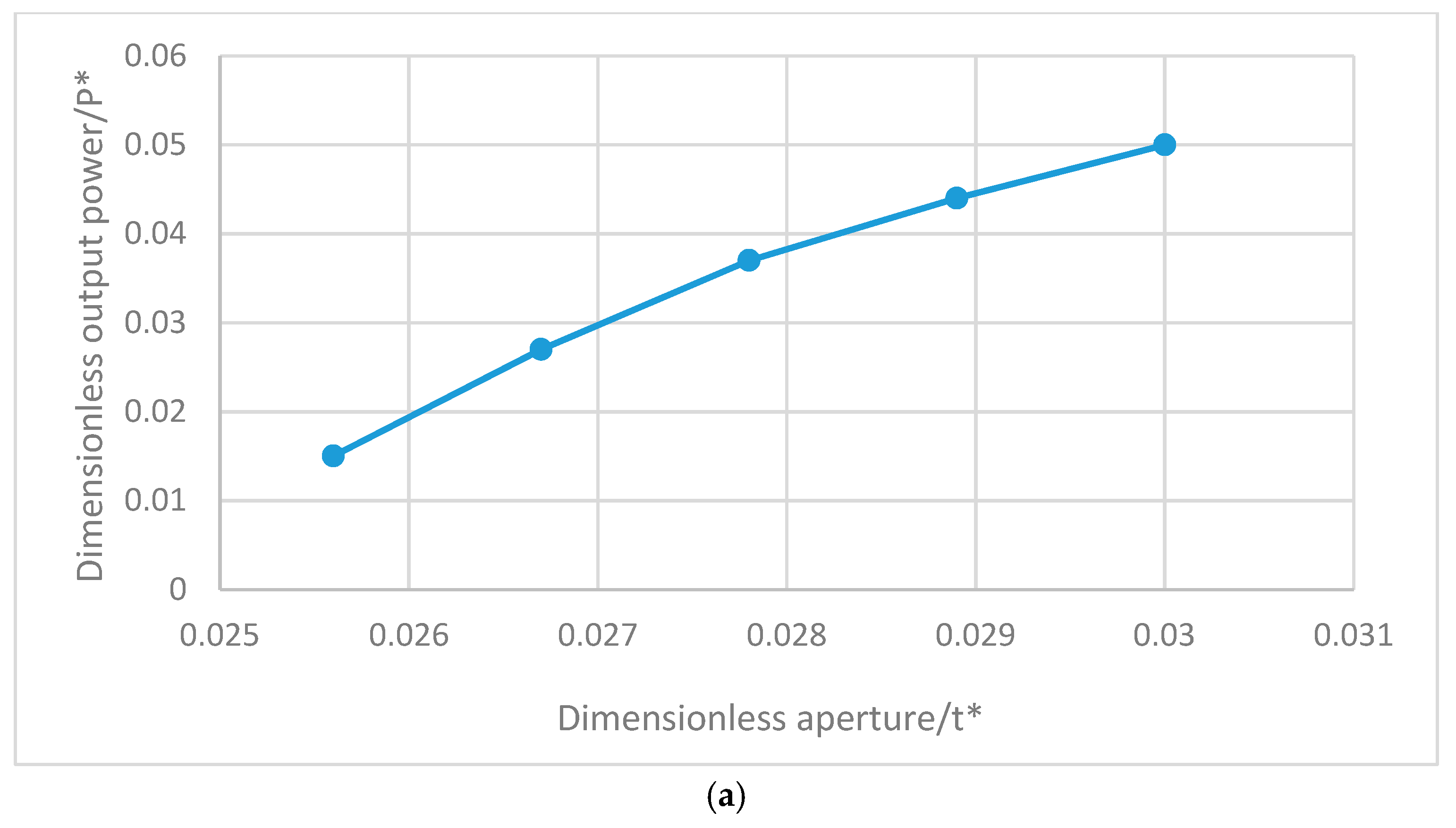
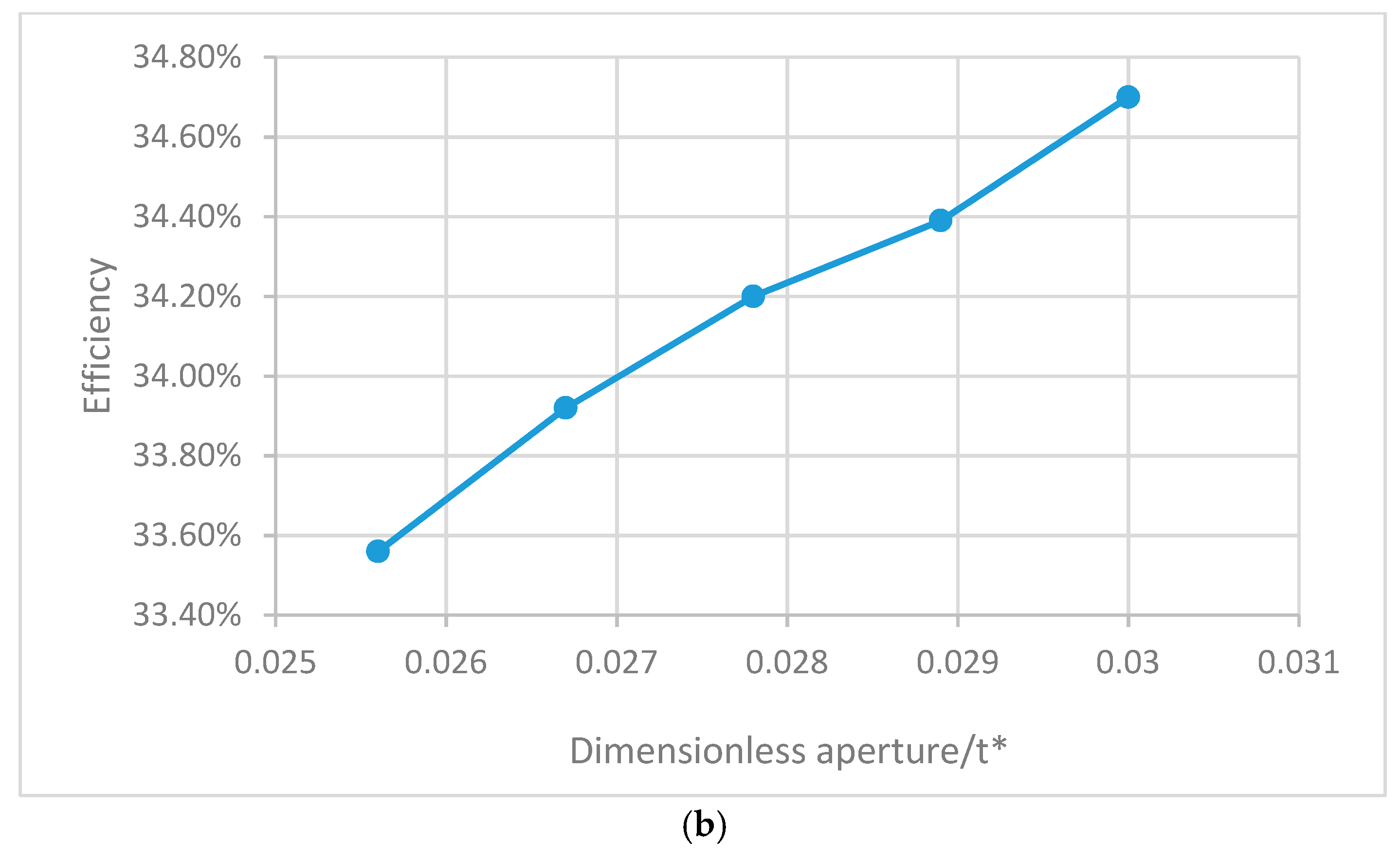
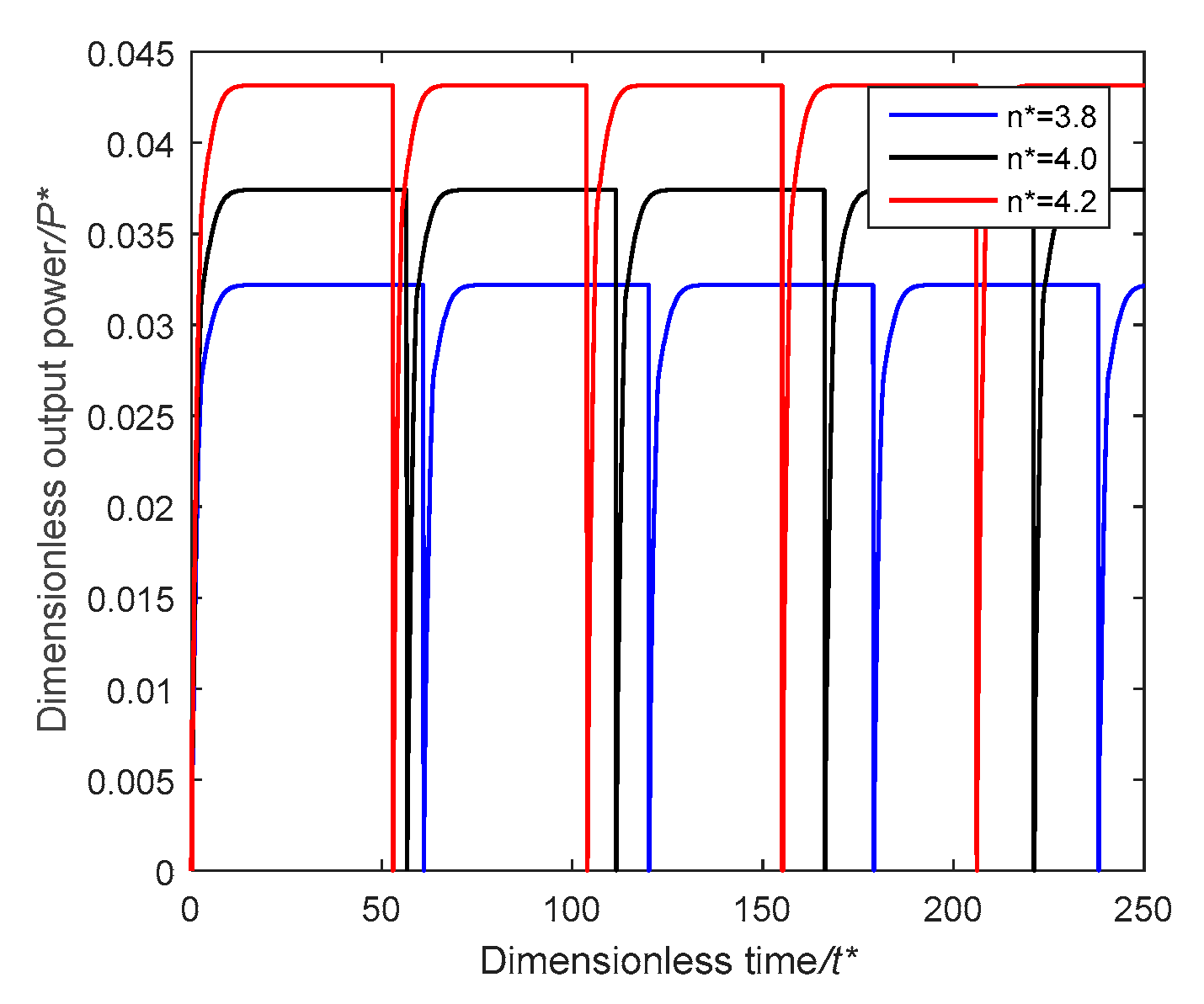
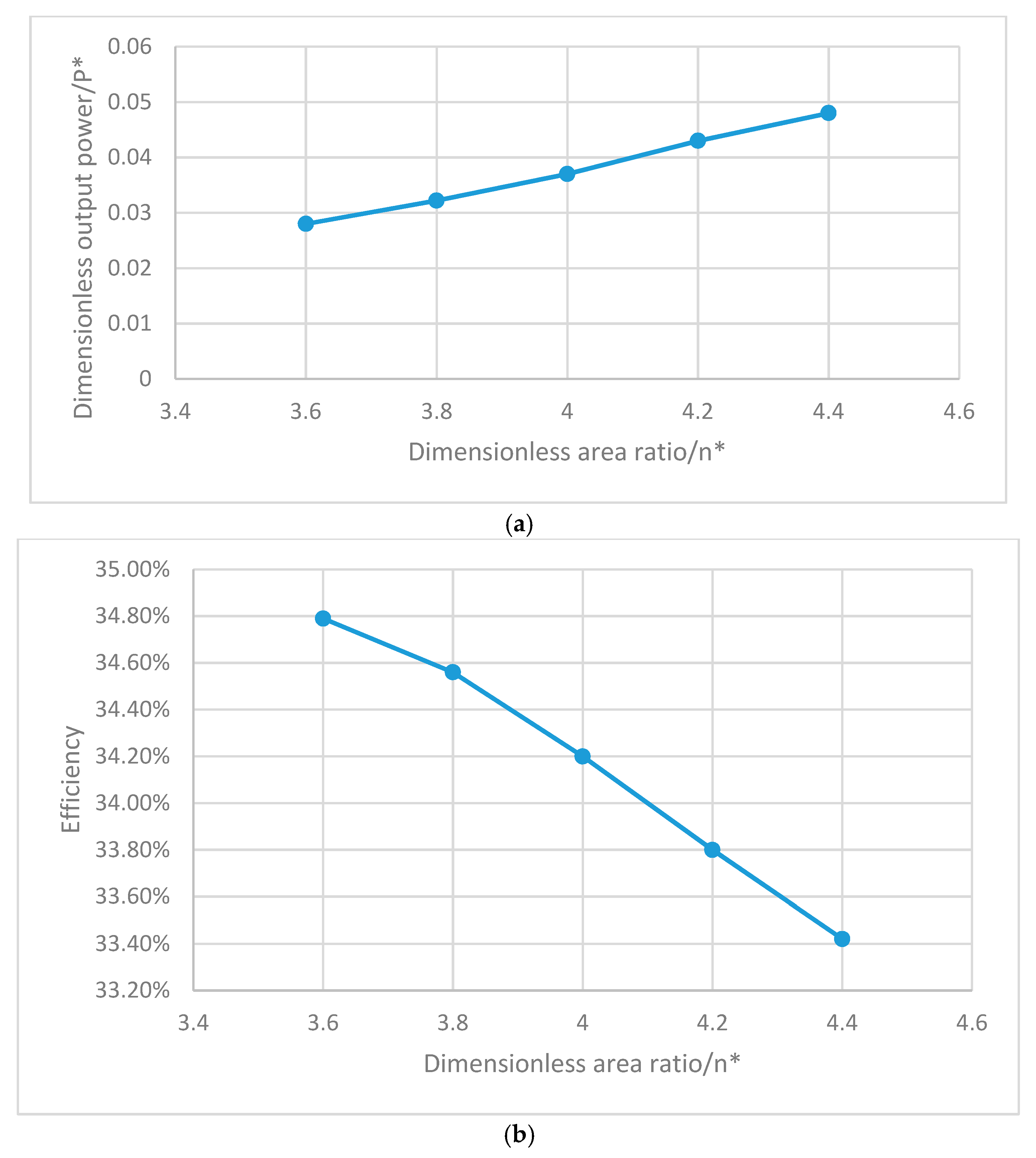
| Variable | Reference Value | Dimensionless Variable | |
|---|---|---|---|
| Affective area | Ap | Area of e piston of the pneumatic chamber | |
| Time | tmin | Time to totally exhaust Wb of air at Gmax of air mass flow | |
| Velocity | Average velocity | ||
| Pressure | Ps | Supply pressure | |
| Temperature | Ta | Atmosphere temperature | |
| Air mass flow | Maximum air mass flow | ||
| Volume flow | Maximum oil volume flow | ||
| Air mass | Maximum air mass | ||
| Displacement | L | Piston stroke | |
| Volume | Maximum volume of pneumatic chamber | ||
| Power of compressed air | Maximum power of compressed air | ||
| Power of hydraulic oil | Maximum power of hydraulic oil when its pressure equals the supply pressure (ps) | ||
| Parameters | Tf* | Fs* | C* | Fc* | Ah* | Po* | Aeh* |
|---|---|---|---|---|---|---|---|
| Values | 0.1425 | 0.00018 | 0.0004 | 0.00036 | 0.25 | 2.857 | 0.000625 |
© 2018 by the authors. Licensee MDPI, Basel, Switzerland. This article is an open access article distributed under the terms and conditions of the Creative Commons Attribution (CC BY) license (http://creativecommons.org/licenses/by/4.0/).
Share and Cite
Shen, D.; Chen, Q.; Wang, Y. Dimensionless Energy Conversion Characteristics of an Air-Powered Hydraulic Vehicle. Appl. Sci. 2018, 8, 347. https://doi.org/10.3390/app8030347
Shen D, Chen Q, Wang Y. Dimensionless Energy Conversion Characteristics of an Air-Powered Hydraulic Vehicle. Applied Sciences. 2018; 8(3):347. https://doi.org/10.3390/app8030347
Chicago/Turabian StyleShen, Dongkai, Qilong Chen, and Yixuan Wang. 2018. "Dimensionless Energy Conversion Characteristics of an Air-Powered Hydraulic Vehicle" Applied Sciences 8, no. 3: 347. https://doi.org/10.3390/app8030347





